
The Black Sea Governorate was an administrative-territorial unit (guberniya) of the Caucasus Viceroyalty of the Russian Empire, established in 1896 on the territory of the Black Sea Okrug of the Kuban Oblast. The administrative center of the governorate was the Black Sea port of Novorossiysk. In 1905, the population of the governorate was approximately 70,000 and its area was 6,455 square versts, making it the smallest Russian governorate by both measures. The governorate ceased to exist when the Black Sea Soviet Republic was established on its territory in the spring of 1918—later the governorate was incorporated into the Kuban-Black Sea Oblast of the Russian SFSR in March 1920.

The Dagestan Oblast was a province (oblast) of the Caucasus Viceroyalty of the Russian Empire. It roughly corresponded to most of present-day southeastern Dagestan within the Russian Federation. The Dagestan oblast was created in 1860 out of the territories of the former Caucasian Imamate, bordering the Terek Oblast to the north, the Tiflis Governorate and Zakatal Okrug to the west, the Elizavetpol Governorate to the south, and Baku Governorate to the east. The administrative center of the oblast was Temir-Khan-Shura.

The Terek Oblast was a province (oblast) of the Caucasus Viceroyalty of the Russian Empire, roughly corresponding to the central part of Russia's North Caucasian Federal District. Тhe оblast was created out of the former territories of the North Caucasian Peoples, following their conquests by Russia throughout the 19th century. The Terek Oblast bordered the Astrakhan and Stavropol governorates to the north, the Kuban Oblast to the west, the Kutaisi and Tiflis governorates to the south, and the Dagestan Oblast to the east. The administrative center of the oblast was Vladikavkaz, the current capital of North Ossetia–Alania within Russia.

The Zakatal okrug was a special administrative district (okrug) of the Caucasus Viceroyalty of the Russian Empire, part of the Tiflis Governorate from 1893 to 1905. The administrative centre of the district was Zakataly, and it corresponded to most of the contemporary districts of Balakan, Zaqatala and Qax of Azerbaijan. The Zakatal okrug was established from the territories of the erstwhile Free Jamaats of Jar-Balakan, bordering the Tiflis Governorate to the west, the Elizavetpol Governorate to the south and the Dagestan Oblast to the north. The district was the smallest independent administrative unit of the Russian Empire, similarly to the Sukhumi okrug.

The Sukhumi or Sukhum okrug was a special administrative district (okrug) in the Caucasus Viceroyalty of the Russian Empire, part of the Kutaisi Governorate from 1883 until 1905. The administrative center of the district was the Black Sea port city of Sukhum. The okrug bordered the Kutaisi Governorate to the southwest, the Kuban Oblast to the north and the Black Sea Governorate to the northwest and in terms of its area corresponded to most of contemporary Abkhazia. During 1905–1917, the Sukhumi okrug was one of the smallest independent administrative units of the Russian Empire, second to the Zakatal okrug.
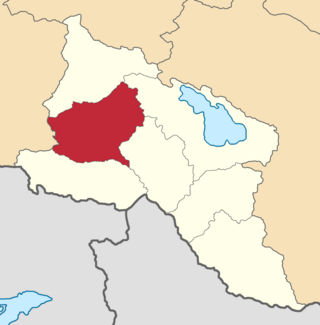
The Etchmiadzin uezd was a county (uezd) of the Erivan Governorate of the Caucasus Viceroyalty of the Russian Empire. The uezd bordered the Alexandropol uezd to the north, the Nor Bayazet uezd to the east, Erivan uezd to the north, the Surmalu uezd to the south, and the Kars Oblast to the west. It included all of the Armavir Province and most of the Aragatsotn Province of present-day Armenia. The administrative centre of the county was Vagorshapat (Vagharshapat), also referred to as Etchmiadzin—the administrative capital of the Armenian Apostolic Church.

The Artvin okrug was a district (okrug) of the Batum Oblast of the Russian Empire, existing between 1878 and 1918. The district was eponymously named for its administrative centre, Artvin, presently part of the Artvin Province of Turkey. The district bordered with the Olti okrug to the south, the Ardahan okrug to the east, the Batumi okrug to the north, and the Ottoman Empire to the west. Between 1883 and 1903, the Artvin okrug formed a part of the Kutaisi Governorate.

The Batumi okrug was a district (okrug) of the Batum Oblast of the Russian Empire existing between 1878 and 1918. The district was eponymously named for its administrative center, the town of Batum, now part of Adjara within Georgia. The okrug bordered with the Artvin okrug in the south, the Ardahan okrug of the Kars Oblast to the southeast, the Tiflis Governorate to the northeast, the Kutaisi Governorate to the north, and the Trebizond Vilayet of the Ottoman Empire to the west.
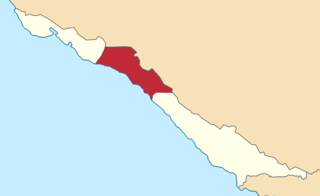
The Tuapsinsky okrug was a district (okrug) of the Black Sea Governorate of the Caucasus Viceroyalty of the Russian Empire. It bordered the Kuban Oblast to the north, the Novorossiysky okrug to the west, the Sochinsky okrug to the east, and the Black Sea to the south. The area of the Tuapsinsky okrug mostly corresponds to the Krasnodar Krai region of Russia. The district was eponymously named for its administrative centre, Tuapse.

The Sochinsky okrug was a district (okrug) of the Black Sea Governorate of the Caucasus Viceroyalty of the Russian Empire. It bordered the Kuban Oblast to the north, the Tuapsinsky okrug to the west, the Sukhumi okrug to the east, and the Black Sea to the south. The area of the Sochinsky okrug mostly corresponds to the Krasnodar Krai region of the Russian Federation. The district was eponymously named for its administrative centre, Sochi.
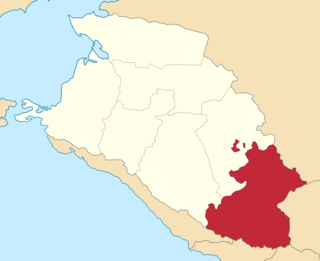
The Batalpashinsky otdel was a Cossack district of the Kuban oblast of the Caucasus Viceroyalty of the Russian Empire. It bordered the Stavropol Governorate to the north, the Labinsky and Maykopsky otdels to the west, the Sochi and Sukhumi okrugs to the south, and the Terek Oblast to the east. The area of the Batalpashinsky otdel included most of the contemporary Karachay-Cherkessia region of Russia. The administrative capital was the city of Batalpashinskaya.

The Maykopsky otdel was a district of the Kuban oblast of the Caucasus Viceroyalty of the Russian Empire. It bordered the Kavkazsky otdel to the north, the Yekaterinodarsky otdel to the west, the Black Sea Governorate to the south, and the Labinsky and Batalpashinsky otdels to the east. The area of the Maykopsky otdel mostly corresponded to Adygea within Russia. The district was eponymously named for its administrative center, Maykop.

The Avarskiy okrug was a district (okrug) of the Dagestan Oblast of the Caucasus Viceroyalty of the Russian Empire. The area of the Avarskiy okrug is included in contemporary Dagestan of the Russian Federation. The district's administrative centre was Khunzakh.
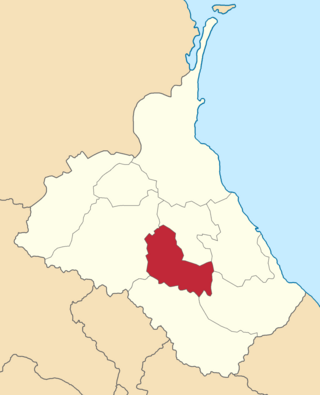
The Kazikumukhskiy okrug was a district (okrug) of the Dagestan Oblast of the Caucasus Viceroyalty of the Russian Empire. The area of the Kazikumukhskiy okrug is included in contemporary Dagestan of the Russian Federation. The district's administrative centre was Kumukh.
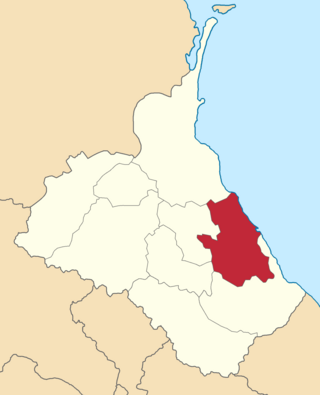
The Kaytago-Tabasaranskiy okrug was a district (okrug) of the Dagestan Oblast of the Caucasus Viceroyalty of the Russian Empire. The area of the Kaytago-Tabasaranskiy okrug is included in contemporary Dagestan of the Russian Federation. The district's administrative centre was Madzhalis.
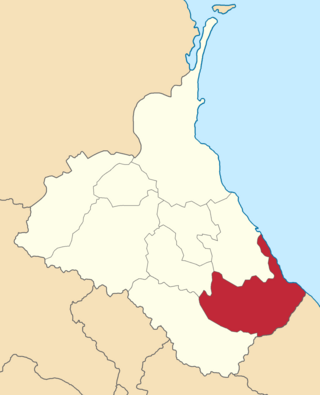
The Kyurinskiy okrug was a district (okrug) of the Dagestan Oblast of the Caucasus Viceroyalty of the Russian Empire. The area of the Kyurinskiy okrug is included in contemporary Dagestan of the Russian Federation. The district's administrative centre was Kasumkent.

The Samurskiy okrug was a district (okrug) of the Dagestan Oblast of the Caucasus Viceroyalty of the Russian Empire. The area of the Samurskiy okrug is included in contemporary Dagestan of the Russian Federation. The district's administrative centre was Akhty.
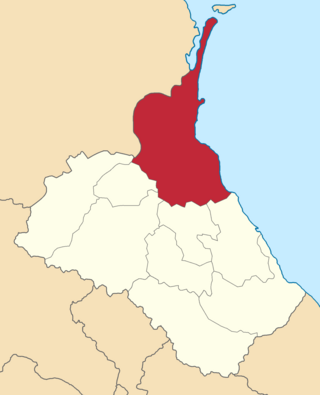
The Temir-Khan-Shurinskiy okrug was a district (okrug) of the Dagestan Oblast of the Caucasus Viceroyalty of the Russian Empire. The area of the Temir-Khan-Shurinskiy okrug is included in contemporary Dagestan of the Russian Federation. The district's administrative centre was Temir-Khan-Shura.

The Vladikavkazsky okrug was a district (okrug) of the Terek Oblast of the Caucasus Viceroyalty of the Russian Empire. The area of the Vladikavkazsky okrug made up part of the North Caucasian Federal District of Russia. The district was eponymously named for its administrative centre, Vladikavkaz.

The Kizlyarsky otdel was a Cossack district of the Terek oblast of the Caucasus Viceroyalty of the Russian Empire. The area of the Kizlyarsky otdel makes up part of the North Caucasian Federal District of Russia. The district was eponymously named for its administrative center, Kizlyar.





















